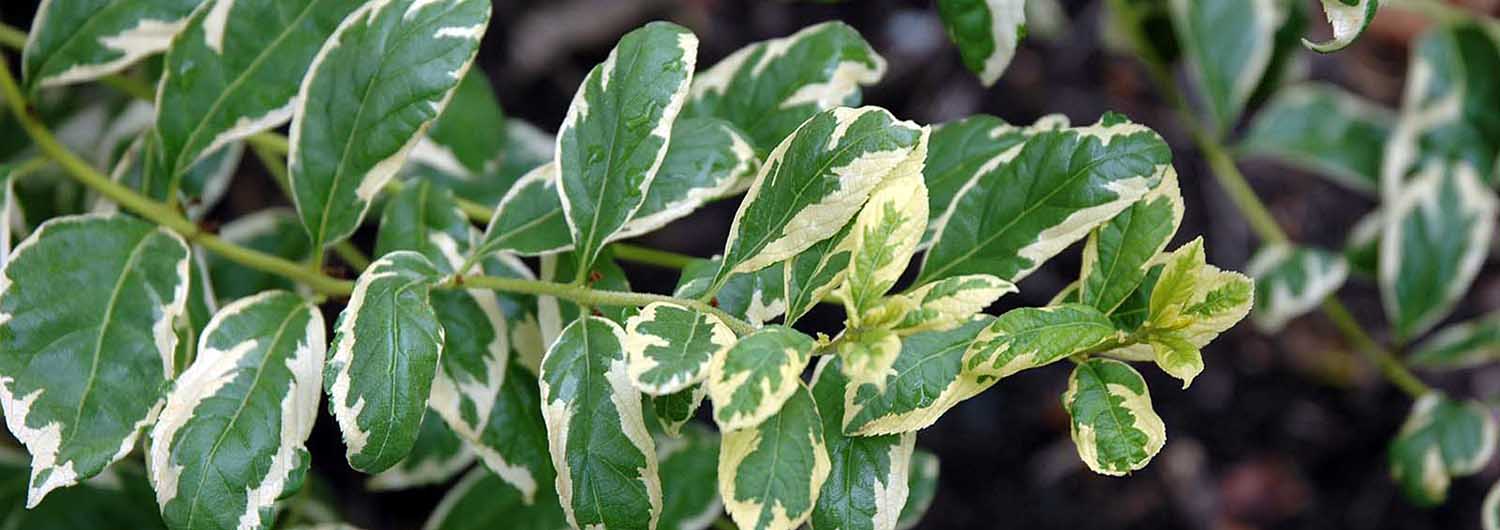Callicarpa dichotoma 'Duet'
variegated white beautyberry
Callicarpa dichotoma 'Duet' was discovered by researchers at Tennessee Technological University in central Tennessee. This sport of the white-fruited beautyberry (Callicarpa dichotoma f. albifructus) bears green leaves broadly and irregularly margined with white and has excellent landscape potential. With the U.S. National Arboretum as a partner, this beautyberry was trialed in public gardens throughout the United States, including the JC Raulston Arboretum. The variegation was found to be very stable and the plants performed well in the landscape prompting the release of this new shrub in 2006. The species is native to Japan, China, and Korea.
Callicarpa dichotoma 'Duet' is a rounded deciduous shrub growing 3'-4' tall by 4'-6' wide. Once established, it can be cut to the ground in the winter to control the size. Small leaves, margined with white make, this a bright plant in the landscape, particularly in the shade garden. White flowers in midsummer give rise to white fruits in early fall. Fruits generally persist through mid to late fall. Plants can be used as specimens, in mixed shrub borders, or mass plantings. They can also be used in habitat gardens.
Like most beautyberries, softwood to semi-hardwood cuttings of 'Duet' root readily using most commercially available rooting compounds at low to medium concentrations. Rooting should occur in two to four weeks. Container production of 'Duet' should be relatively quick due to the surprising vigor of this heavily variegated plant; young plants may benefit from shearing to develop a full top.
Landscape trials of this plant have been made across the United States for several years. It has proven cold hardy in zone 5 and heat tolerant throughout the Deep South making it adapted for all areas of North Carolina. Plants prefer an average to moist soil, but are relatively drought tolerant once established although they may exhibit some browning of leaf margins during exceptionally dry periods. There are no serious insect or disease problems.

